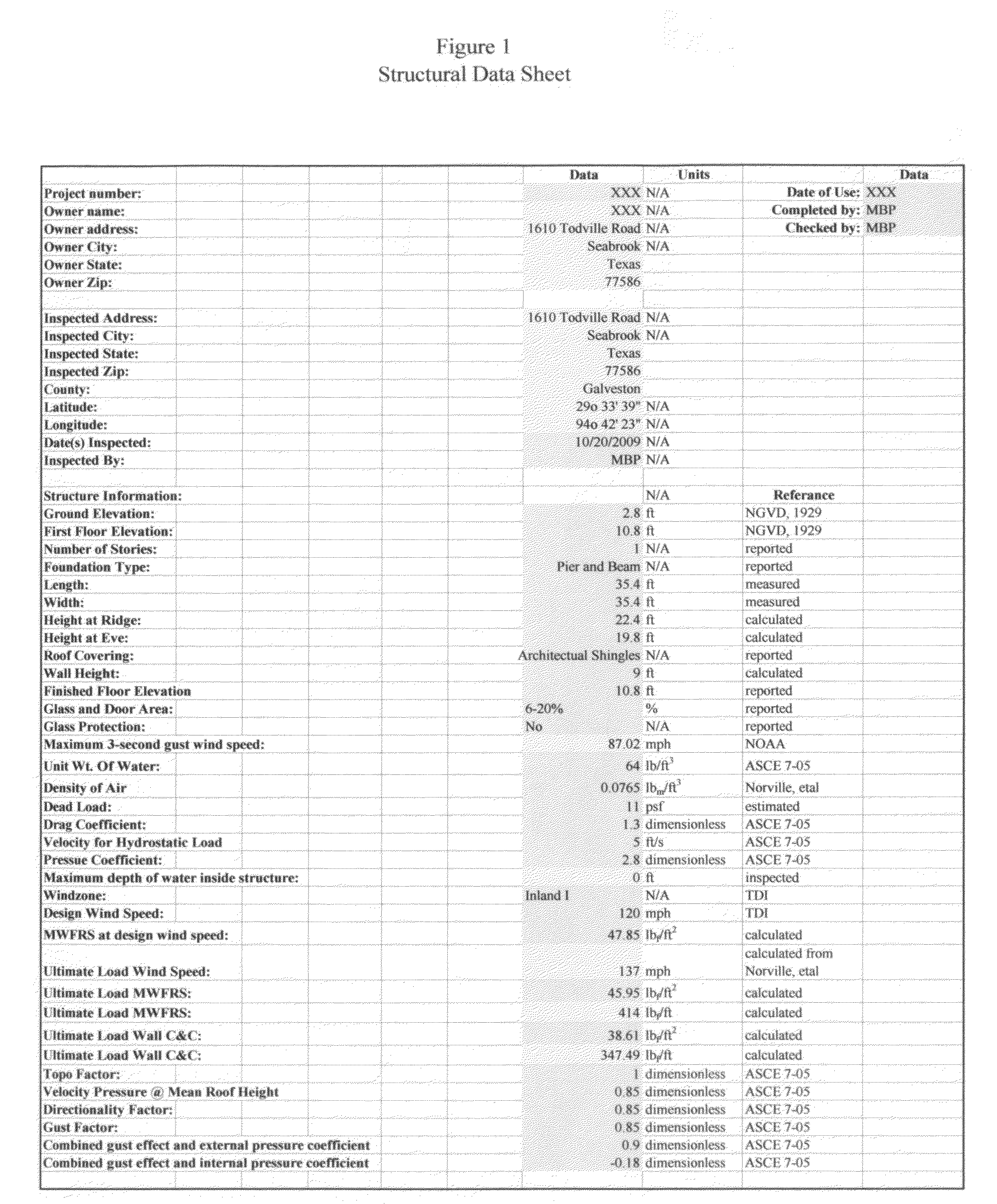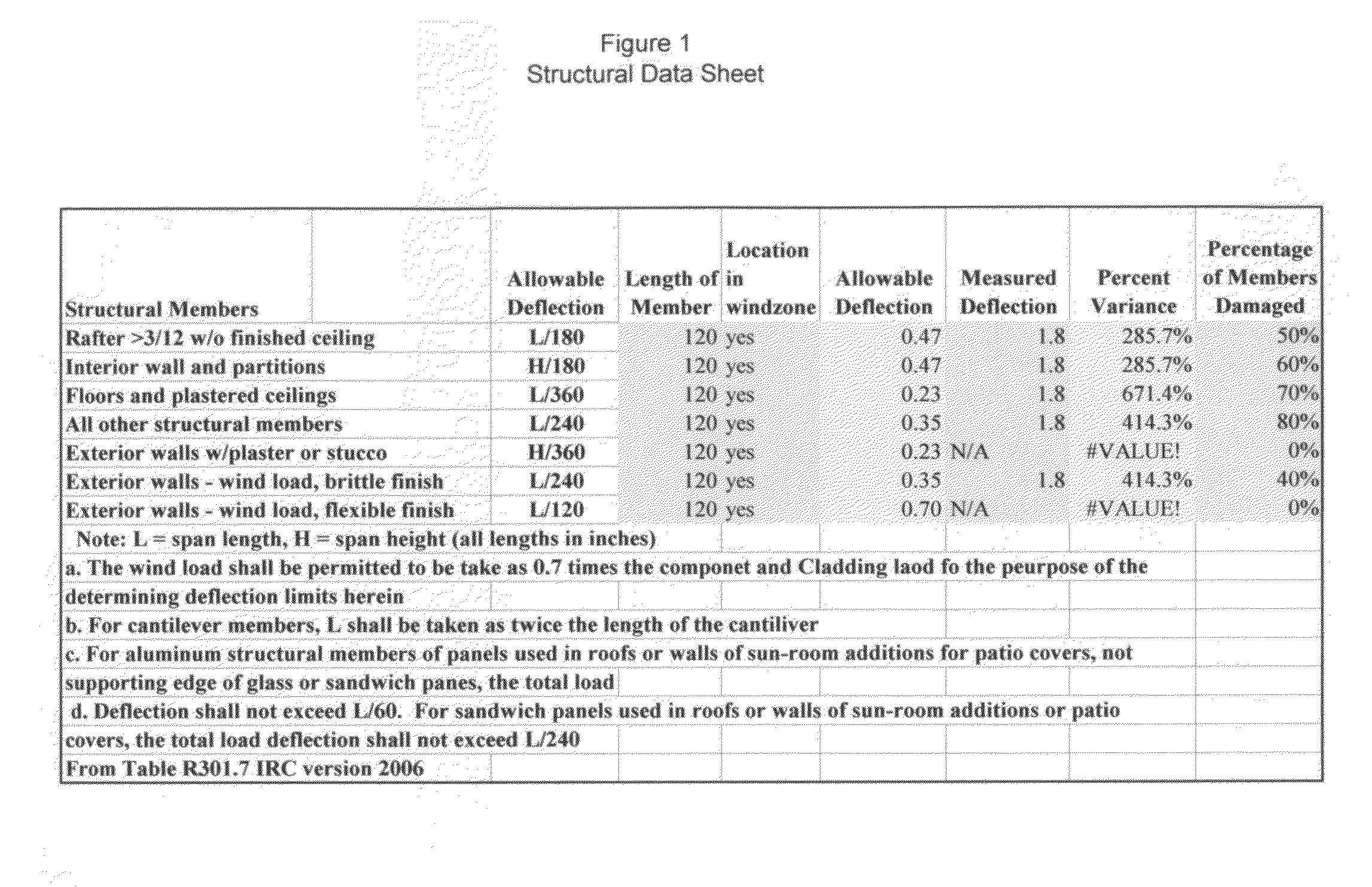Method to determine percentage of damage to structure from single or multiple forces
a technology of structure damage and percentage, applied in the direction of structural/machine measurement, elasticity measurement, instruments, etc., can solve the problems of not addressing the build-up of event intensity, the safferi-simpson scale does not address the ultimate load, and neither of the above methods address the measurement of the applied load (from all sources)
- Summary
- Abstract
- Description
- Claims
- Application Information
AI Technical Summary
Benefits of technology
Problems solved by technology
Method used
Image
Examples
Embodiment Construction
[0037]As required, detailed descriptions of the preferred embodiment are provided herein. It is to be understood, however, that the present invention may be embodied in various forms. The figures are not necessarily to scale; some features may be exaggerated to show details of particular components. Therefore, specific structural and functional details disclosed herein are not to be interpreted as limiting, but rather as a basis for the claims and as a representative basis for teaching one skilled in the art to employ the present invention in virtually any appropriately detailed system, structure or manner.
[0038]This patent application is for a physically based mathematically process to determine the percentage of damage, from one or multiply sources, (such as wind and flood) (but not limited to only wind and flood) that cause damage to structures.
This process comprising the following steps of:[0039]1. Determining the location and physical dimensions of the structure;[0040]2. Acquir...
PUM
 Login to View More
Login to View More Abstract
Description
Claims
Application Information
 Login to View More
Login to View More - R&D
- Intellectual Property
- Life Sciences
- Materials
- Tech Scout
- Unparalleled Data Quality
- Higher Quality Content
- 60% Fewer Hallucinations
Browse by: Latest US Patents, China's latest patents, Technical Efficacy Thesaurus, Application Domain, Technology Topic, Popular Technical Reports.
© 2025 PatSnap. All rights reserved.Legal|Privacy policy|Modern Slavery Act Transparency Statement|Sitemap|About US| Contact US: help@patsnap.com



